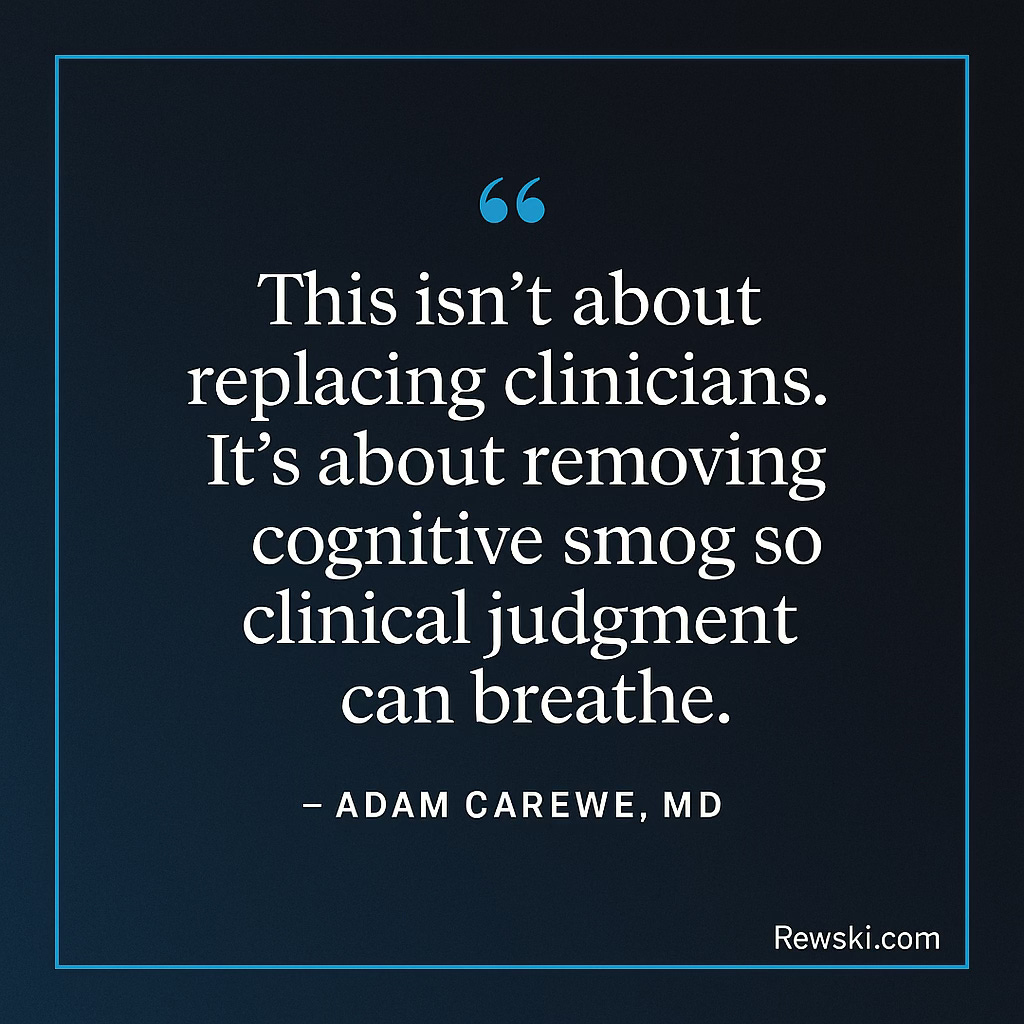What if you could understand the “why” behind a visit in under 60 seconds—and never touch the EHR during the encounter?
Less friction, better follow-through: turning the dream into reality.
Want to support Rewskidotcom Substack and the NerdMDs | Efficiency Unlocked Podcast?
♻️ Share this post with friends in healthcare!
🫰 Become a paid subscriber!
📢 Become a sponsor (email me)
🌟 Leave a 5-star review for the NerdMDs | Efficiency Unlocked Podcast
Less friction, better follow-through: turning the dream into reality.
For years I fantasized about a very boring superpower: opening a chart a few minutes before a visit and instantly knowing what mattered.
No spelunking through note bloat. No guessing why the patient booked today. No flipping between labs, imaging, messages, and three different problem lists like a short-order cook.
Just the “why,” the relevant context, and a clean path forward.
It sounded like a dream—until it became repeatable.
The Delta-First Clinic
Core idea: Capture and curate everything before the room door clicks shut, so the visit itself is about the delta—what changed, what hurts, what decision we need to make—rather than a scavenger hunt.
The 1-Minute Warm Start
Minutes before I walk in, I see a single surface that answers four questions:
Why are they here today? (In their words, not mine.)
What’s changed since last time? (Symptoms, meds, home data, care elsewhere.)
What information already exists? (Only the relevant labs, vitals, imaging—curated and interpreted; not a PDF dump.)
What decisions are likely on deck? (Shortlist with pros/cons and risks, not orders.)
This is not a wall of text. It’s a synthesized brief I can scan in under 60 seconds and trust.
The Zero-Click Encounter
When I enter the room, I’m not an interrogator. I’m a human. We talk.
Ambient capture pulls our conversation into structured data. The system highlights deltas I haven’t addressed and quietly files the rest to the right places: HPI, problem list updates, med changes, counseling, time. If I need to clarify, I ask one targeted question, not twenty.
Stop interrogating patients. Start closing the delta. 🤝
The Autopilot After-Visit
When we agree on an assessment and plan, the machine does boring things perfectly:
Orders are queued (labs, imaging, referrals) with the right indications and diagnoses.
The patient leaves with a clean, readable plan: what we did, why, what happens next.
Tasks and reminders fire without me building a Rube Goldberg machine in the inbox.
Follow-up is reserved—then the patient tunes it to their life.
No heroics. No late-night box-checking. Just operational hygiene built in.
The Loop That Learns
Before the next visit, the system reconciles reality with intent:
Did labs get drawn?
Did imaging actually happen?
Did symptoms change or stabilize?
Did external care create new data?
The next 1-minute brief lands with the new delta already surfaced. The cycle repeats and compounds.
Reflection
We often assume better care requires more—more questions, more clicks, more documentation. In my experience, better care requires less friction and tighter feedback loops.
When the prep is right, the visit gets shorter and richer. When the output is right, patients follow through because the plan isn’t a mystery. When the loop is right, we stop re-discovering the same facts every 90 days.
This isn’t about replacing clinicians. It’s about removing cognitive smog so clinical judgment can breathe.
The dream wasn’t fewer patients. The dream was fewer distractions.
And now, the dream is becoming a reality.



